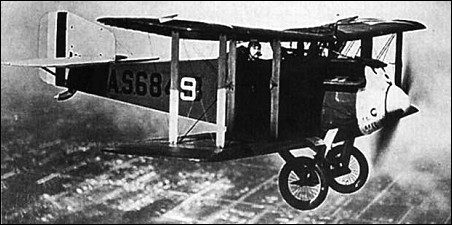| Anonymous, 22.05.2021 18:40 At the time the U.S. entered WW-I in April 1917 the U.S. Army Air Service was administered or, as many would say, "mis-managed", by the Army Signal Corps. As a result, the U.S. Air Service was, technologically, far behind its' European contemporaries. First flown in February 1919, the Thomas-Morse MB-3 was the first U.S.-developed fighter to be adopted by the U.S. Air Service that was as good as its' foreign counterparts. Unfortunately, by that time WW-I was over, so the MB-3 was never afforded the opportunity to demonstrate its' potential. However, it did play a major role in the development of the Post-WW-I Army Air Service. Although largely forgotten today, the MB-3 played a featured role portraying both Allied and German fighters in the early motion picture, "Wings", which was awarded the very first Academy Award for "Best Picture". reply |
| Barry, 30.03.2016 14:16 This aircraft was designed by British born designer
B Douglas Thomas following a request from the United States Army Air Service for a replacement for their First World War vintage Spad XIII. An initial 50 were produced and with a further requirement for another 200 designated as MB3A Thomas Morse were sure they had the contract in the bag only to be underbid by Boeing who were on their knees after cancellation of war contracts. They were very much more geared up for large production runs and it is fair to say that this contract did keep them "alive". Thomas Morse did however, get a contract from the Marine Corps for 12, but this one would suspect was very much a case of "losing a half crown and finding sixpence". reply |











